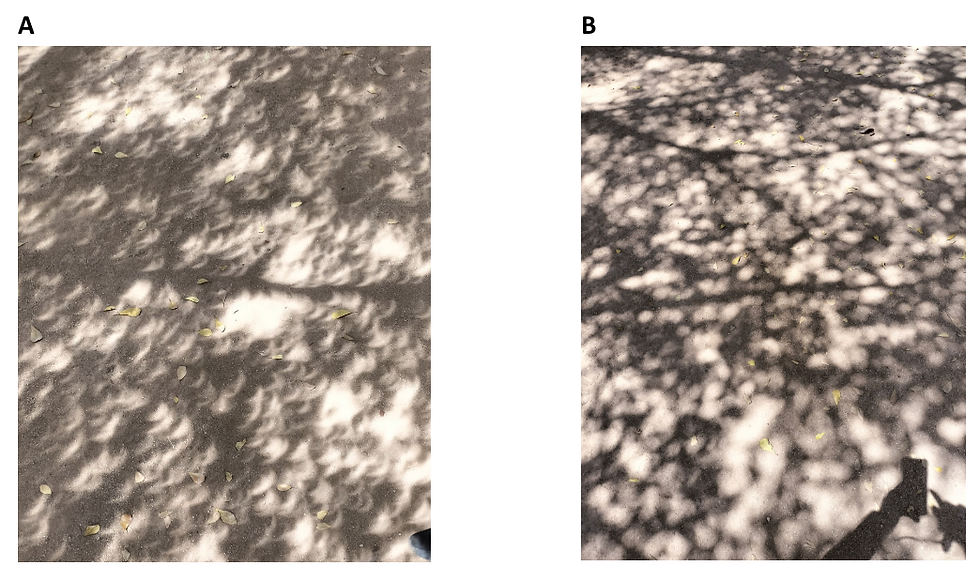Pinhole effect and shadows during a solar eclipse
- Emiliano Terán
- Jan 25
- 2 min read

Solar eclipses are fascinating astronomical events that capture the attention of professional astronomers, enthusiasts, and the general public. The total solar eclipse that took place in Mexico in 2024 was a notable example of this. During these events, various optical effects can be observed, in addition to the impressive total darkness produced in the umbra zone; among them, we can also find the shadows projected by trees due to the pinhole or stenopeic effect. In the penumbra region, the shadows of the trees create a series of crescent shapes around the leaves, resulting in a unique visual spectacle.
This phenomenon is due to the diffraction of light as it passes through a very small aperture, such as the tiny holes formed by tree leaves. During a solar eclipse, these small apertures project these curious figures onto the ground surface. On a typical day without an eclipse, sunlight reaches the Earth directly without any significant obstacles in its path. Therefore, there is no source of "weak" or "diffuse" light that can generate diffraction patterns like the crescent shapes.
The figure at the beginning of the text presents two photographs taken at different times: during the eclipse (A) and a day later (B), both captured in the same location and approximately at the same time. The image on the left notably reveals the pinhole effect that produces the crescent shapes in the projected shadows. In contrast, in the photograph on the right, the shadows lack a defined pattern. It is important to highlight that this image was taken at the facilities of the Sinaloa Science Center.
The extraordinary impact of the eclipse in Mazatlán, Sinaloa, which brought together more than 200 thousand people to witness the phenomenon of the total solar eclipse, is noteworthy. This astonishing total solar coverage provided a unique opportunity for Sinaloa to showcase its lesser-known side, a facet that rarely has the chance to shine internationally.
The presence of NASA experts at the event further emphasizes the importance and relevance of this occasion. It was not only an impressive astronomical spectacle but also served as a vehicle for science, allowing research and scientific knowledge to reach everyone's homes. This solar eclipse was more than just an astronomical event; it was an inspiration for children and young people, inviting them to explore the fascinating world of science and consider the scientific path as an option for their future.
In conclusion, solar eclipses are periodic phenomena that fortunate regions witnessing them should take advantage of. They not only offer opportunities for scientific study but also for enjoying and appreciating the wonders of nature. Furthermore, these events are an excellent opportunity to highlight the contribution of the scientific community to understanding these majestic astronomical phenomena.
Emiliano Terán
Comments